Strike Graph's story is fast and direct. Justin Beals founded the company in 2020, bringing his mix of cybersecurity and AI experience. The timing worked. Compliance work was rising, new frameworks were popping up, and most teams were juggling too many disconnected tools. Strike Graph took the opposite route and built one system that could scale with growing needs.
That focus helped it grow at a quick pace. The company reports more than 300 customers and support for 25+ frameworks. This puts it in the "rapid adoption" group, not the slow-growth path most GRC startups follow. Because it pushes compliance automation and covers many standards, founders often ask about Strike Graph pricing and search for Strike Graph reviews to see how the platform holds up under real audit pressure.
The industry recognition backs that momentum. On G2's Spring 2025 report, Strike Graph walked away with a full lineup of wins:
- Momentum Leader
- Best Estimated ROI - Mid-Market
- Easiest Admin - Mid-Market
- Fastest Implementation - Mid-Market
- Users Most Likely to Recommend - Small Business
- Best Meets Requirements - Small Business
It's the kind of award sweep you don't earn without clear traction - especially in a space tied to NIST certification, SOC reports, and every security audit buyers throw at fast-growing teams.
What makes Strike Graph interesting isn't that it's yet another platform in the compliance automation category. It's that it positions itself as an AI-native way to get through the mess faster. Whether that holds up once you look under the hood? That's what this breakdown is for.
Let's get into it. And if you want a simpler, faster way to get your certifications moving, you can always book a quick demo with ComplyJet.
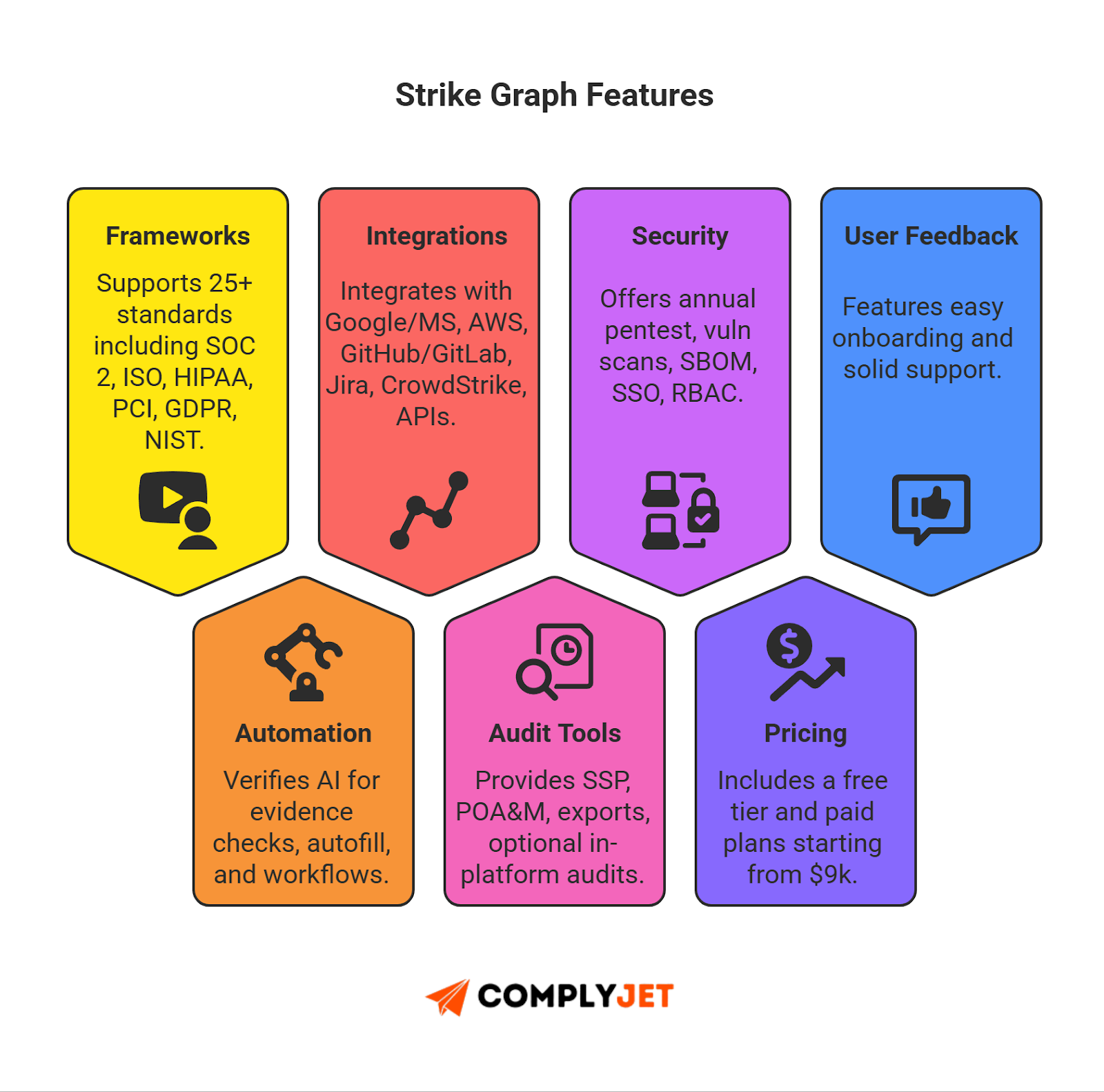
Core Features & Capabilities Breakdown
Strike Graph covers a wide range of compliance needs. Instead of scattering features across different tools, the platform brings most workflows into one place. Here's a quick table so you can see the full picture before diving into each area.
Verify AI
Verify AI is Strike Graph's automation layer. It reviews evidence, links records, autofills fields, and handles routine questionnaire responses. It also pulls more than 5,000 data points from your stack to keep your program updated. The idea is to reduce manual cycles without changing how your team works.

This is one of the areas people talk about most in detailed Strike Graph reviews, especially when they're managing several audits at once. It's built to support heavy frameworks like NIST certification, but works fine for lighter programs too. Some teams still prefer a manual pass for certain items, but most use Verify AI to trim repetitive steps. It fits neatly into the broader compliance automation category without feeling intrusive.
Automated Evidence Collection, Integrations & SBOM Manager
Strike Graph connects with tools most teams already use: Google Drive, Microsoft 365, GitHub, GitLab, AWS, Jira, DocuSign, CrowdStrike, and ServiceNow. REST API and SFTP options fill in the gaps. Once linked, the system pulls evidence into one place and maps it to controls.
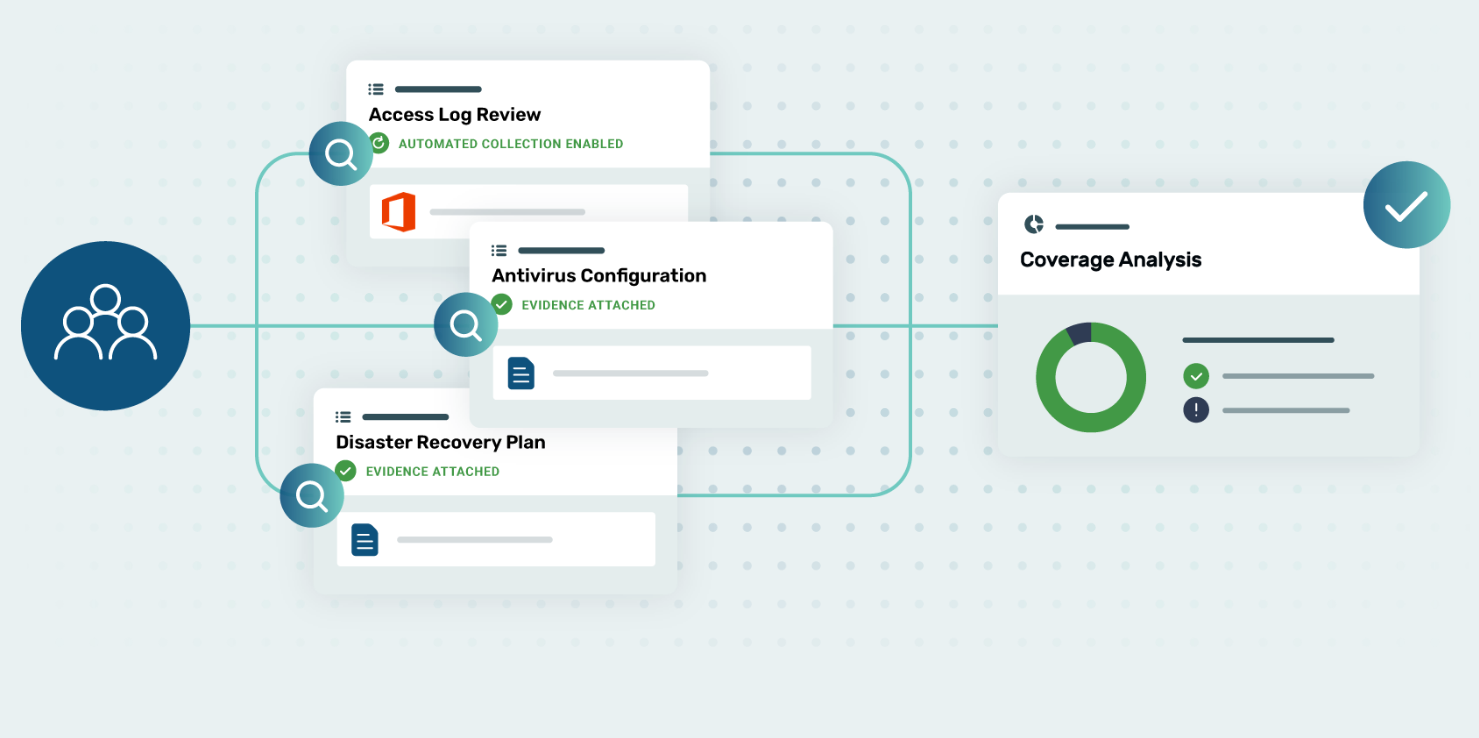
The SBOM Manager is a simple add-on for engineering teams. It tracks components through GitHub or GitLab and updates when repos change. It's handy if you want to keep supply chain information close to your compliance workflows.
These integrations also help prepare for a security audit, since they keep your documentation updated and consistent. Some companies still partner this setup with deeper network penetration testing, but the built-in coverage is usually enough for baseline needs.
Multi-framework Management & Compliance Coverage
Strike Graph supports more than 25 frameworks. This includes SOC 2, the full ISO family, HIPAA, PCI-DSS, GDPR, CMMC, DORA, NIS2, CCPA/CPRA, FDA, TISAX, and HITRUST. It also covers multiple NIST variants, which helps teams who operate in regulated industries.
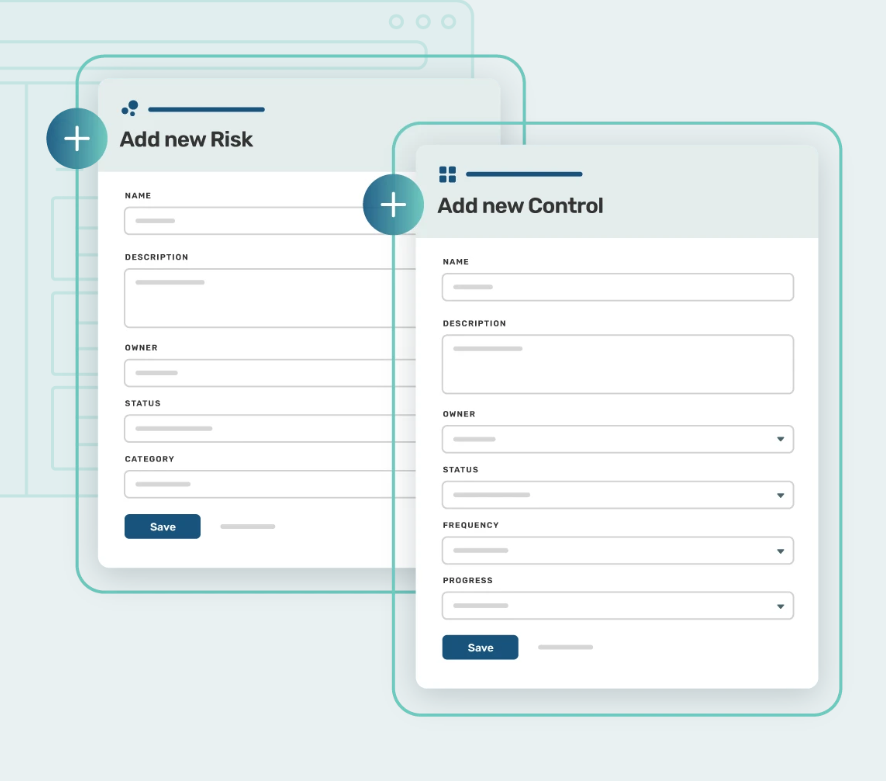
The framework mapping reduces repeated work. You update a control once, and those changes flow across programs where they apply. It's useful for teams managing SOC 2 compliance while also preparing for certifications tied to NIST certification or other sector-specific standards.
Most companies use this feature to keep things consistent rather than to replace dedicated expertise.
Audit & Certification Workflows
Strike Graph includes tools for audit preparation and documentation. This covers the SSP builder, POA&M tracking, and exportable workbooks. The platform also offers optional in-platform audit services for teams that want the entire cycle in one system.
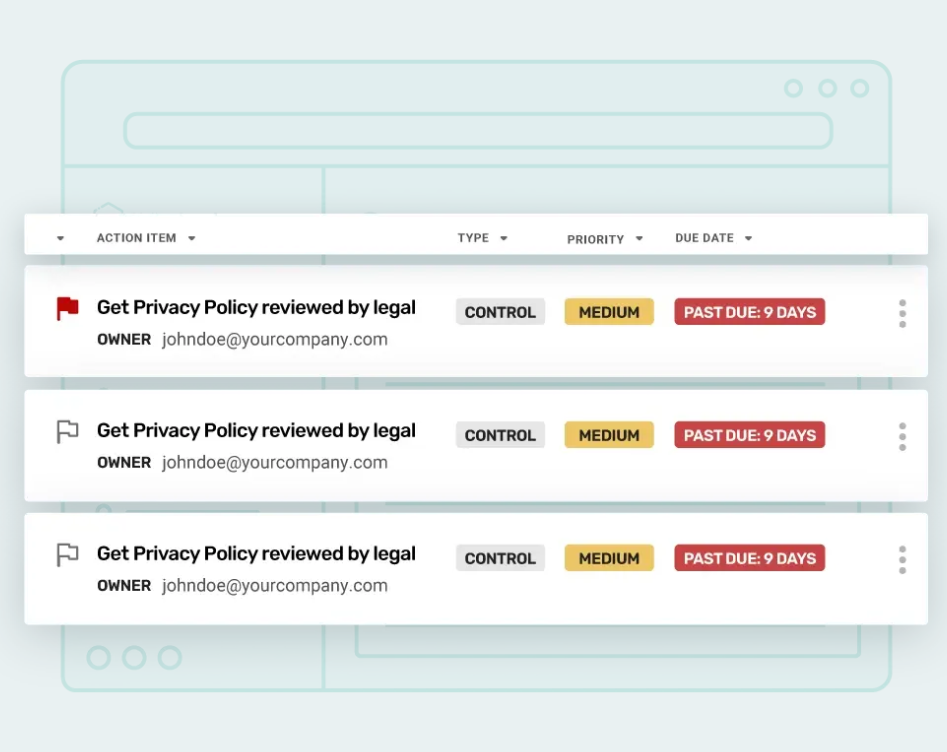
This is where teams start checking Strike Graph pricing, since workflows can vary by tier. It's also the part that often shows up in more technical Strike Graph reviews because the audit flow tends to shape how the rest of the platform feels.
The tools are structured and predictable, though larger teams may still prefer working with external auditors for certain frameworks.
Enterprise Content
Enterprise content features help companies with several entities or product lines. You can sync controls across subsidiaries, roll out changes from a parent account, and track progress across teams. Vendor risk scoring and questionnaires sit here too.
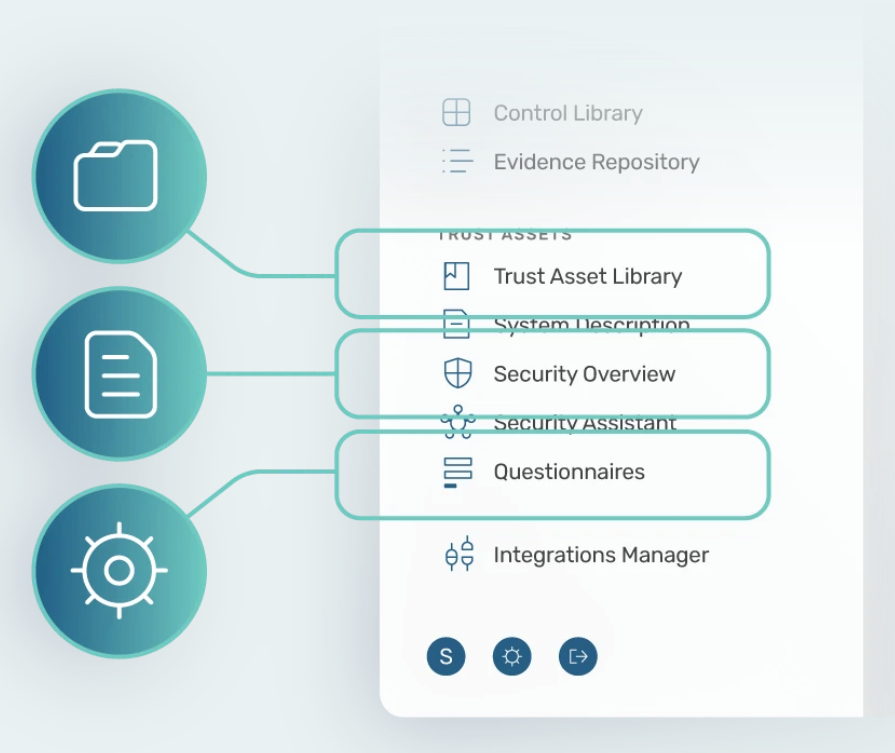
It's a practical way to organise work without juggling several systems. These features also cut down overhead for teams already using multiple GRC tools, since everything aligns under one dashboard. And because it ties into the automation layer, the system handles updates without much friction.
Some companies still keep manual checks for complex vendor programs, but the setup works for most.
Security Posture Features
Strike Graph includes core security tools like annual penetration testing, vulnerability scanning, and SBOM support. The platform also offers hosting options, SSO, RBAC, and encryption controls. This covers the basics for vendor requirements and internal policy needs.
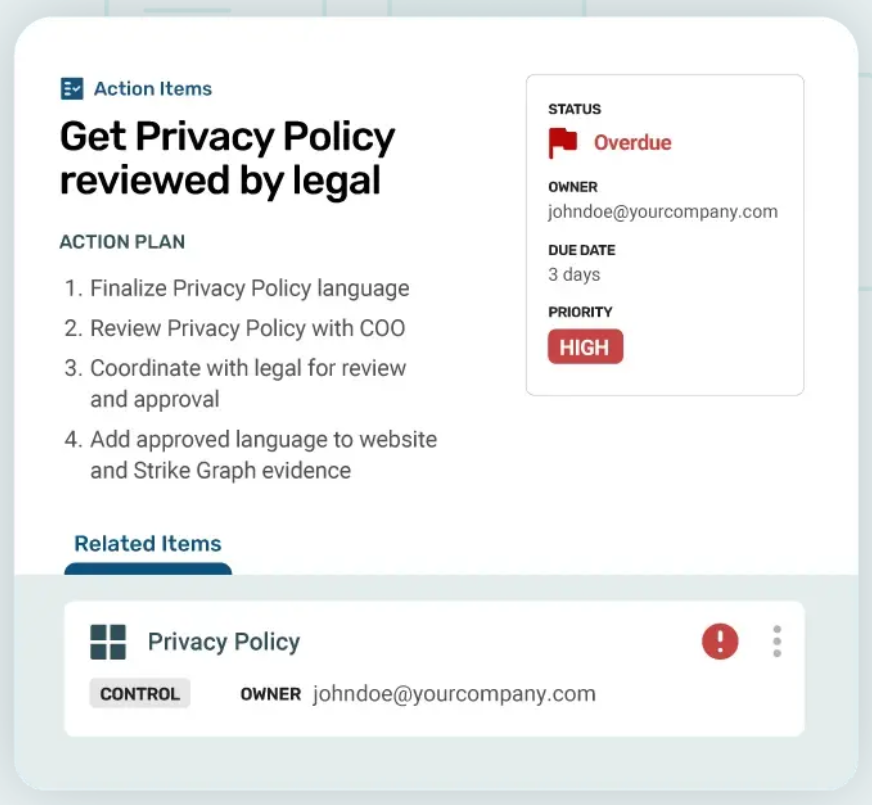
These features support audit readiness for programs tied to SOC 2 compliance, and help companies show baseline due diligence. Some teams still run external network penetration testing for deeper assessments, but Strike Graph's built-in coverage handles routine needs without adding more tools to the stack.
Pricing, Tiers & Commercial Considerations
Strike Graph's pricing model is one of the few in this space that's fully public. The tiers are simple on paper:

- Launch: Free
- Certify: Starts at $9,000 per year
- Scale: Starts at $18,000 per year
- Enterprise: Starts at $27,000 per year
Each tier increases evidence allowances, automation depth, and support options. Smaller teams use Launch or Certify to get moving, while mid-market companies usually land on Scale for multi-framework work.
Enterprise teams use the higher tier when they need cross-entity rollouts or more control over reporting. This is one of the reasons founders look up Strike Graph pricing early in their evaluation process - the structure gives a clear sense of where they might fit.

- Evidence limits vary by tier, and going past those limits triggers per-attachment fees.
- Framework add-ons sit in the $2,000 to $8,000 range depending on the program.
These aren't hidden costs, but they do matter if your audits are evidence-heavy or if you plan to expand into several frameworks later.
Strike Graph also includes annual penetration testing for customers and offers optional in-platform audit services. For some companies, that's convenient. Others still pair the platform with external auditors, depending on their comfort level or the type of SOC 2 compliance they're aiming for.
You'll see both approaches mentioned in longer Strike Graph reviews, especially from teams comparing how much of their audit workflow they want to centralise.
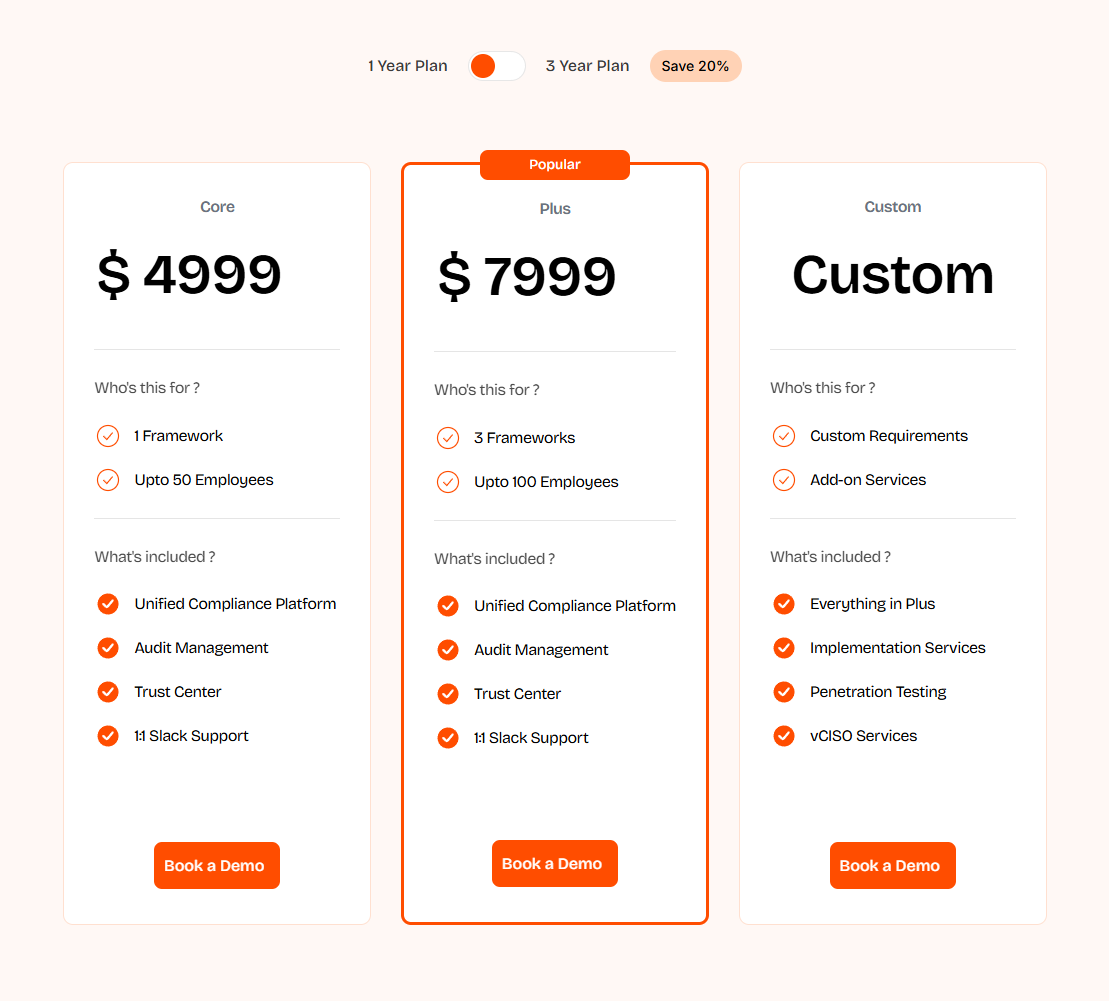
If you're comparing tools, it helps to benchmark pricing against outcomes. At ComplyJet, the structure is simpler and usually comes in lower than most competitors. More importantly, it's built for speed:
- SOC 2 compliant in 7 days
- Audit-ready in 2-3 weeks
If you want to see the difference firsthand, you can book a quick demo and walk through the numbers before deciding.
Reviews and Measured Impact
Most founders skim Strike Graph reviews to understand how the platform feels once the setup phase ends. The feedback is consistent: teams like the structure and visibility the platform gives them, especially when managing several frameworks at once.
There are also notes about limitations, which help set realistic expectations. Here's a balanced look at what users tend to mention:
What Users Like
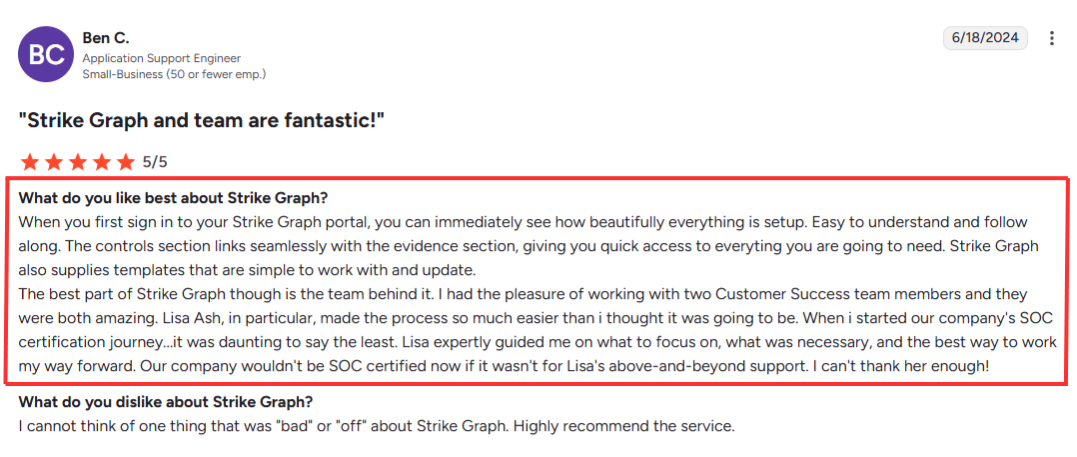
- The platform is easy to use and quick to onboard.
- Support and account management teams are responsive and helpful.
- The control-and-evidence structure makes certification prep clearer.
- Real-time dashboards give solid visibility into frameworks and tasks.
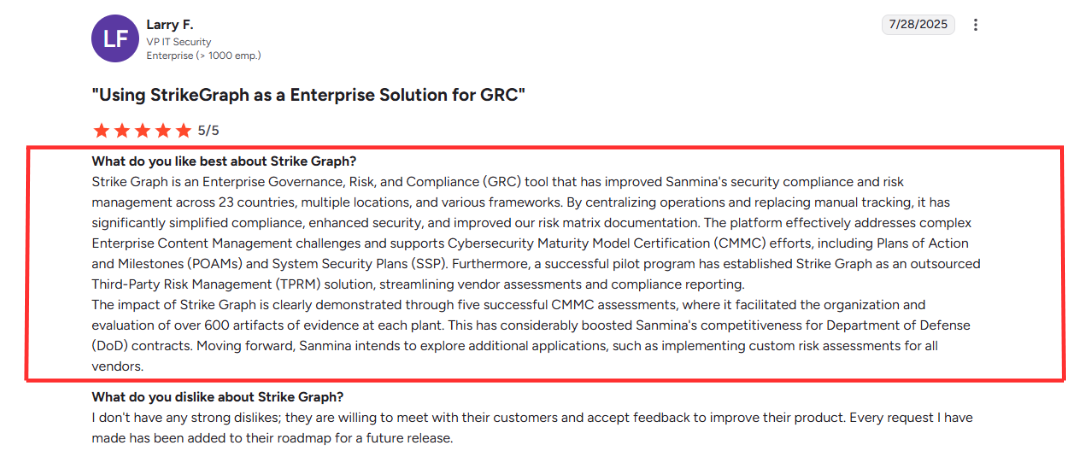
- Pricing feels transparent and scalable for many teams, especially early on.
- Multi-framework and multi-entity support works well for growing companies.
- Prebuilt templates help new teams ramp faster.
What Users Don't Like

- Evidence collection isn't always fully automated; some setups need manual steps.
- Certain integrations have gaps, especially around GitHub and Confluence.
- Mapping visuals and template relevance could be more polished.
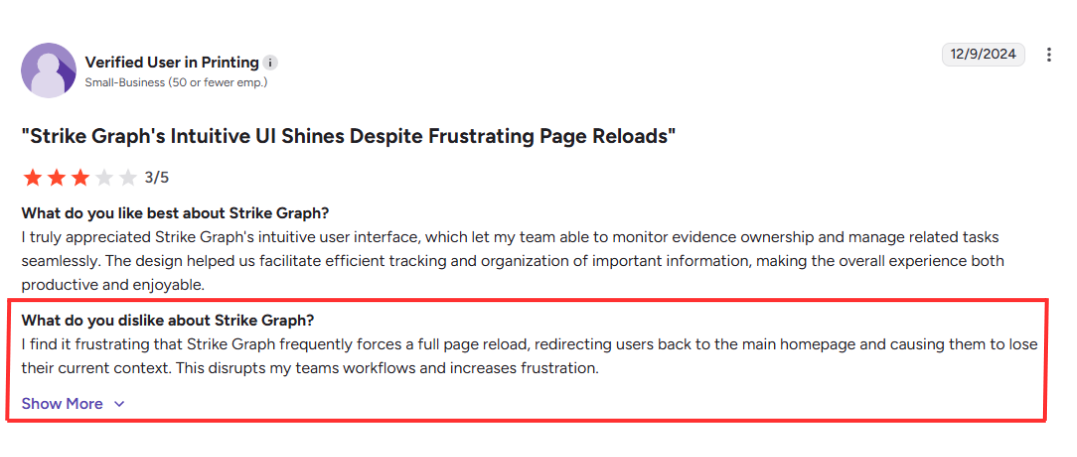
- Some advanced modules feel early-stage or still evolving.
- Notifications and alerts could be more granular and proactive.
These points show up often in Strike Graph reviews, especially from teams comparing automation depth across platforms or adjusting their workflows around evidence collection.
Vendor-reported outcomes
Strike Graph reports:
- 100% certification success rate
- Faster audit prep through automated validations
- 48-hour turnaround for automated questionnaire responses
These numbers help teams benchmark expectations, though most founders still verify claims with case studies or reference calls. The data helps frame conversations, but it shouldn't replace due diligence - especially for companies with complex engineering stacks or heavy network penetration testing requirements.
This is also the stage where teams compare value across tools and look at Strike Graph pricing in context. Reviews tend to highlight the strengths, note the gaps, and give a clear sense of how the platform performs under real compliance timelines.
Who Strike Graph Is Best For
Strike Graph works best for teams that need structure across multiple standards without building everything from scratch. It covers a wide set of frameworks, so companies with varied requirements often find it easier to manage their programs in one place.
Here are the frameworks Strike Graph covers:
Strike Graph Alternatives - When to Compare Options
Teams start looking at Strike Graph alternatives when they want a different mix of automation, security work, or audit support. Most of these comparisons happen in founder groups where people share real experiences.
They also link to Strike Graph reviews or talk about how the tool fits their budget. This is common when they check Strike Graph pricing against other platforms.

When you may want a security-first or heavier pentest tool:
Strike Graph offers scanning, SBOM tracking, and one annual pen test. This is enough for basic needs. But some companies want deeper testing or year-round checks. They often explore Strike Graph alternatives that focus on continuous monitoring or more hands-on security assessments. These tools help teams that treat security as an active, ongoing program.
When you may choose a traditional GRC platform:
Some teams prefer platforms like Vanta, Drata, or Secureframe. These tools offer strong mapping views, steady workflows, and mature integrations. They also support teams with complex setups or several internal groups. This style works well for companies that want structured dashboards collecting data from a host of GRC tools.
A quick evaluation checklist for founders
1. Plan and feature fit
Assess how each platform supports multi-entity setups, shared controls, and cross-framework mapping across your roadmap.
2. Automation depth
Look at the type of automation offered. Some tools lean on AI for evidence handling and questionnaire work; others keep to rule-based and predictable flows.
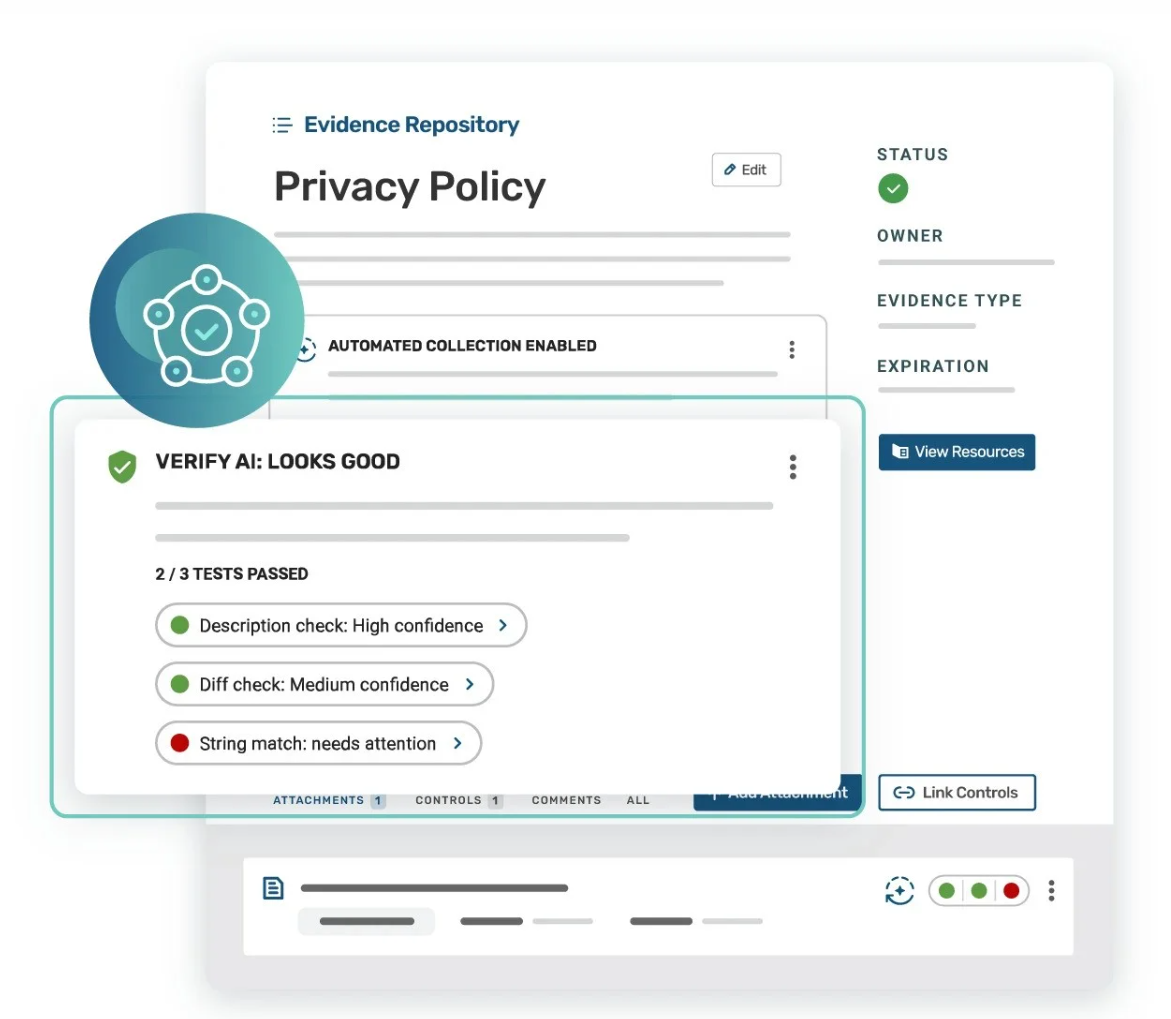
3. Integration coverage
Review how well each platform connects to your engineering, data, and security stack. Native integrations reduce friction; broader API routes offer flexibility.
4. Evidence limits and add-ons
Consider how evidence caps, attachment overages, and framework add-ons may affect long-term cost as your program expands.
5. Security expectations
Match the tool to your internal posture. If your team needs deeper testing or more continuous oversight, pairing compliance with separate security tooling may make more sense.
FAQs: Founders' Most Asked Questions
What does Strike Graph pricing include and how much should companies expect to pay?
Strike Graph pricing starts with a free Launch tier and moves into paid plans - Certify, Scale, and Enterprise - depending on the number of frameworks, automation needs, and evidence volume.
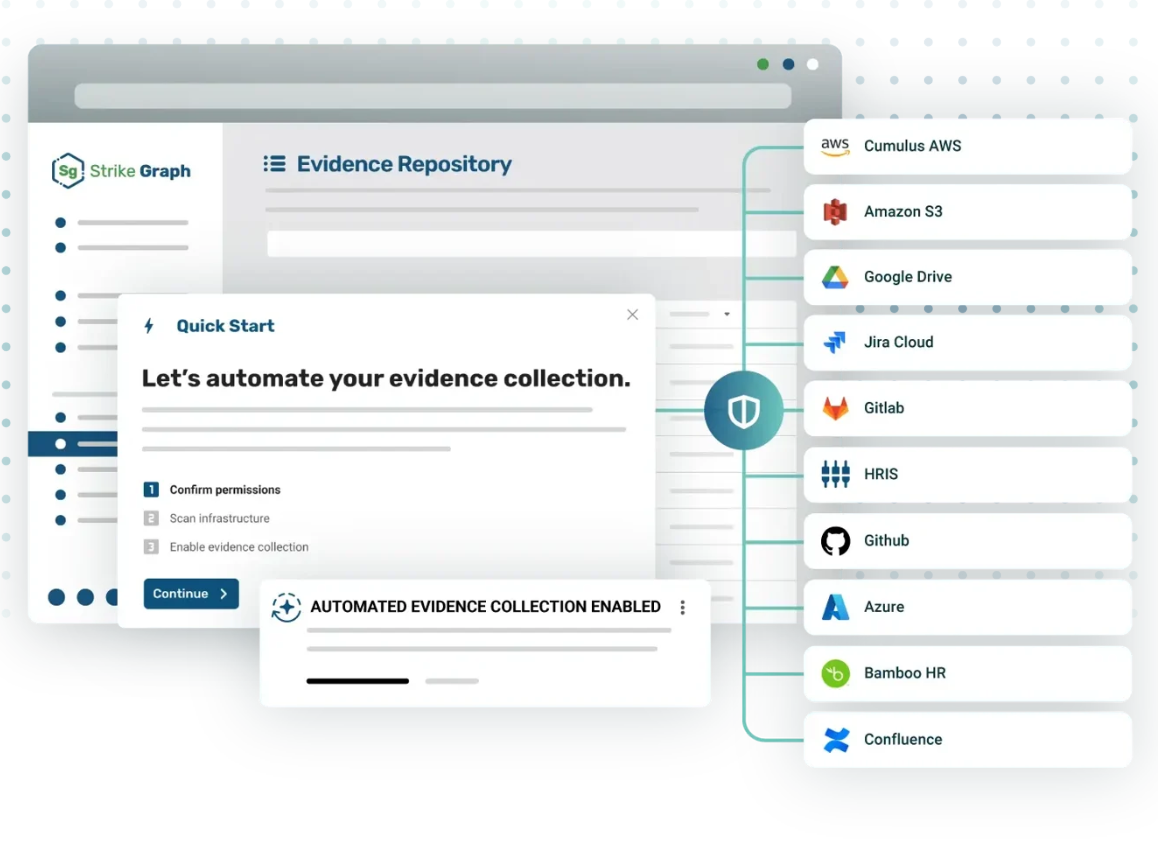
Extra frameworks cost $2k-$8k, and attachment overages can add up for evidence-heavy audits. Multi-entity or multi-product companies usually need the higher tiers for shared controls and broader reporting. Planning for expected growth helps prevent mid-year surprises.
What do Strike Graph reviews say about real-world onboarding and usage?
Most Strike Graph reviews highlight quick onboarding, a clean control structure, and a strong support team. Users like the dashboards and how the workflow keeps evidence organised during audits.

But several reviews mention that evidence collection isn't always fully automated, some integrations (especially GitHub or Confluence) need manual workarounds, and mapping visuals could be clearer. Others note that certain templates feel basic and alerts aren't always granular, so teams keep some level of manual oversight.
Is Strike Graph a good fit for NIST certification or multi-framework environments?
The platform supports NIST 800-53, 800-171, 800-172, and related frameworks. Teams can update shared controls once and reuse them across SOC 2, ISO, HIPAA, and other standards.
This helps reduce duplicated work while staying consistent across audits. It's well-suited for companies managing NIST certification alongside multiple frameworks.
Does Strike Graph provide built-in penetration testing, or do companies still need separate services?
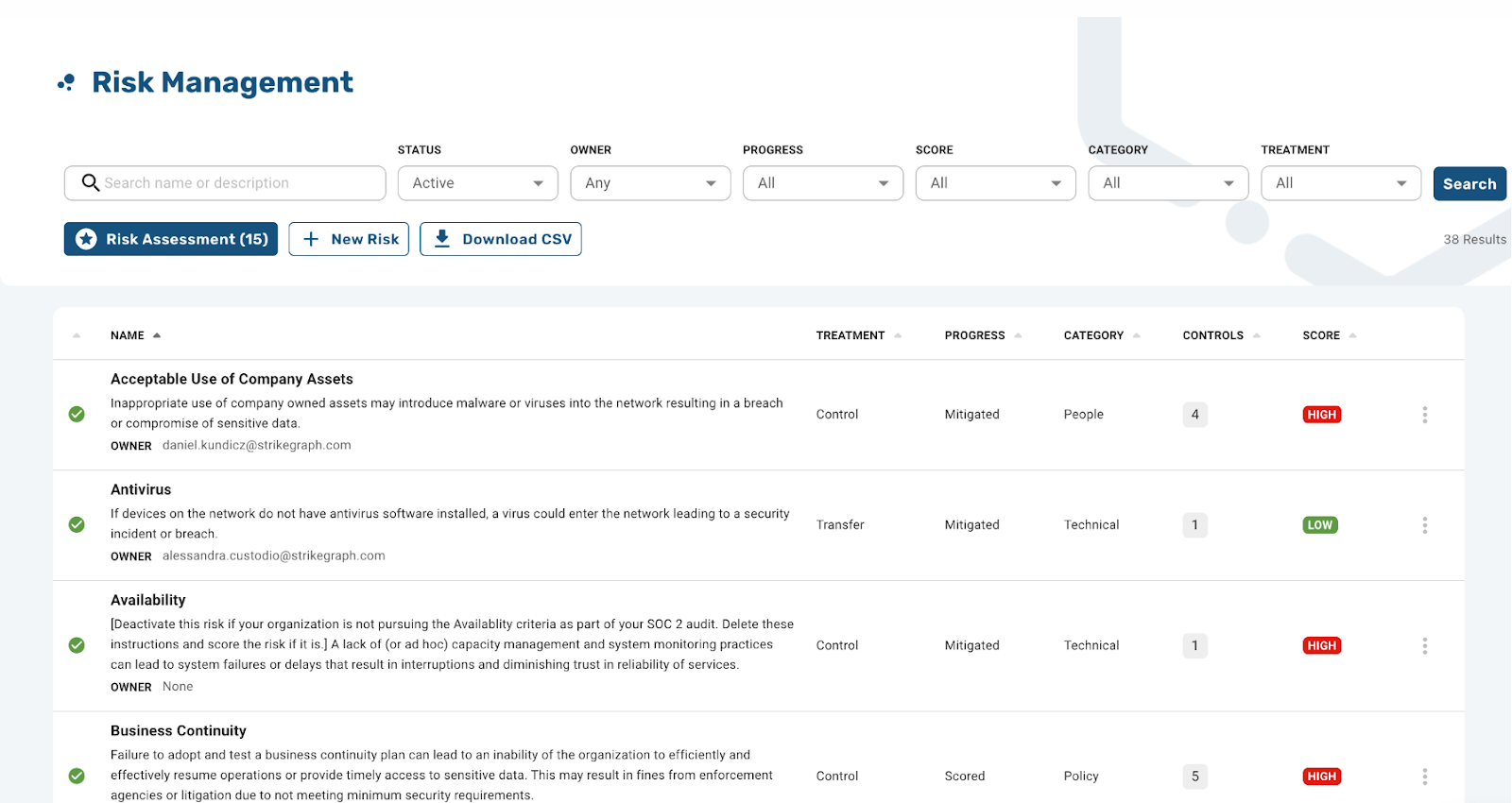
Strike Graph includes an annual penetration test and vulnerability scanning in certain tiers. This is enough for baseline assurances and vendor reviews.
Companies with deeper risk programs or continuous testing needs still use external partners. The built-in testing is meant to support compliance, not replace full security operations.
How much manual work does Verify AI actually remove?
Verify AI automates evidence validation, autofill, record linking, and questionnaire responses. It also pulls data from more than 5,000 system points to keep controls updated.
Teams still perform manual checks on unique controls or custom infrastructure. It reduces repetitive work but doesn't remove the need for oversight.
How does Strike Graph support multi-entity or multi-product organisations?
Strike Graph includes shared controls, parent-subsidiary rollouts, and real-time syncing across entities. Companies with several product lines use it to maintain consistency across teams and markets.
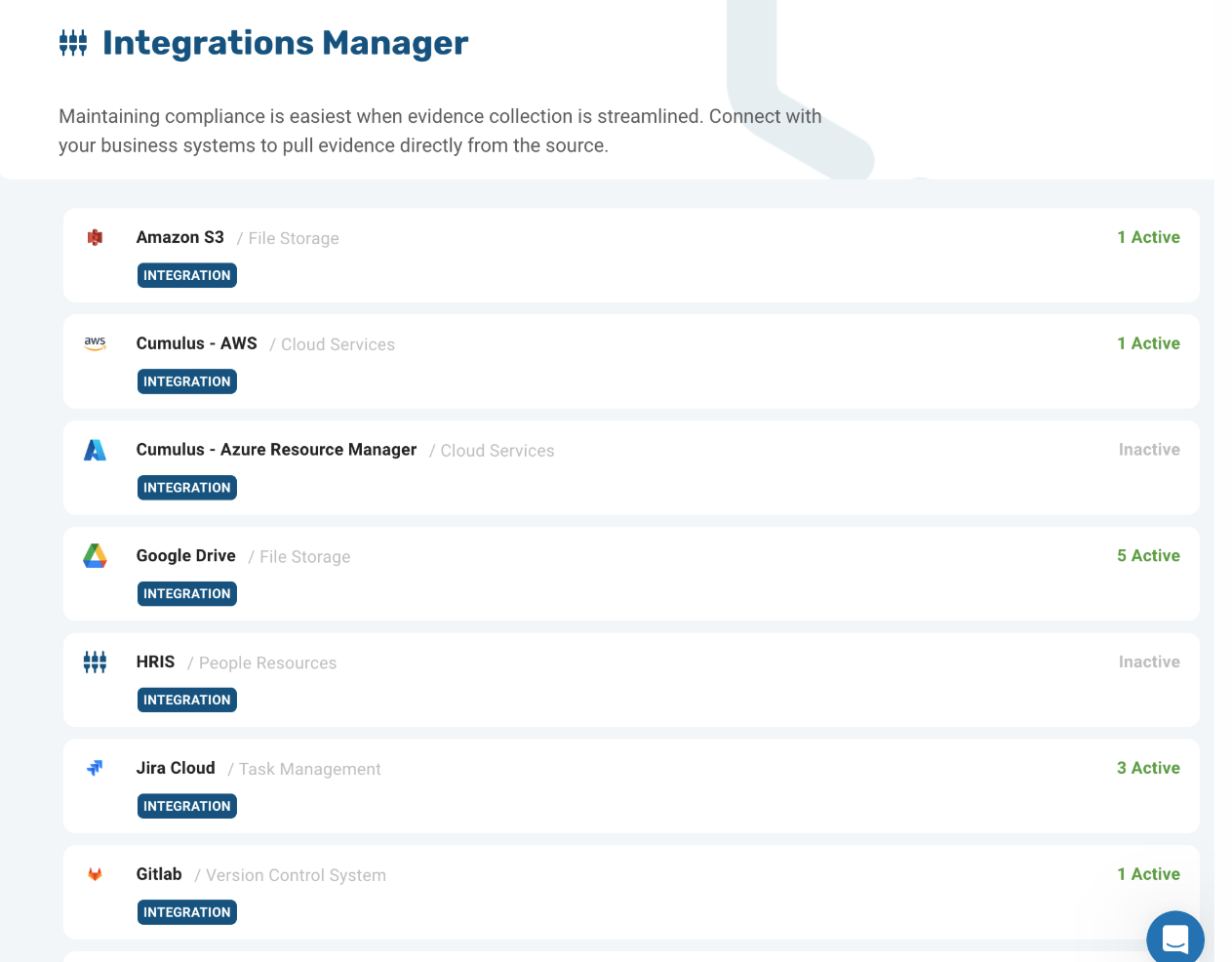
Reporting is centralised, so leadership has a clearer view of progress. It's especially helpful for regulated industries or organisations managing several audits at once.
What should founders keep in mind when choosing a tier?
Evidence caps and framework add-ons play a big role in long-term cost. Teams expecting rapid growth often select a tier that supports multi-entity work early.
Companies with heavy engineering stacks may need higher attachment limits sooner than expected. Reviewing expected certifications for the next 12-18 months helps avoid switching tiers mid-audit.
Does Strike Graph reduce the need for external auditors or consultants?
Strike Graph supports audit prep with SSP templates, POA&M tracking, evidence workflows, and exportable audit workbooks. It also offers optional in-platform audit services for teams that want to consolidate everything in one place.
Many companies still use external auditors for certifications that require independent validation. Think of Strike Graph as the operational hub and auditors as the final reviewers.
Final Verdict & Next Steps
All in all, Strike Graph lands in an interesting spot in the compliance world. It's not trying to be the loudest tool on the market - it's trying to be the organised one. Its biggest strengths show up when you're juggling several frameworks, managing more than one product, or trying to bring order to scattered controls.
And if you read through enough Strike Graph reviews, a pattern emerges: teams like the structure, the visibility, and the steady guidance through audits, even if a few integrations still need more polish.

That said, founders should look closely at Strike Graph pricing, especially if they expect evidence-heavy audits or plan to expand into multiple frameworks fast. The tiered model is transparent, but attachment caps and add-on frameworks can change the math for growing companies.
It's a great fit for teams that want predictable workflows, AI support, and clean cross-framework mapping - not a "do everything for you" platform, but a reliable one.
If you want to try it, the starting points are simple: launch the free plan, book a demo, compare plans, or talk to their team about your roadmap. It's low-commitment and gives you a good sense of whether the workflow matches how your team operates.
And if speed is the priority - faster readiness, shorter timelines, and fewer moving parts - you can try ComplyJet. We help teams get audit-ready in 2-3 weeks and SOC 2 compliant in 7 days.
Start your free trial now.



